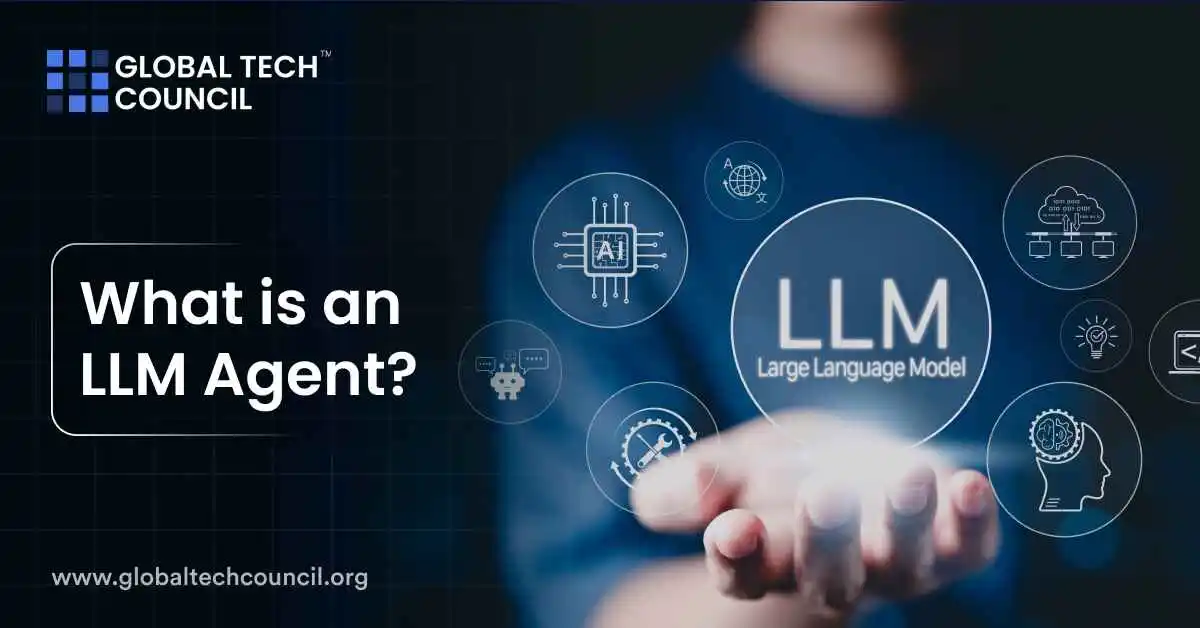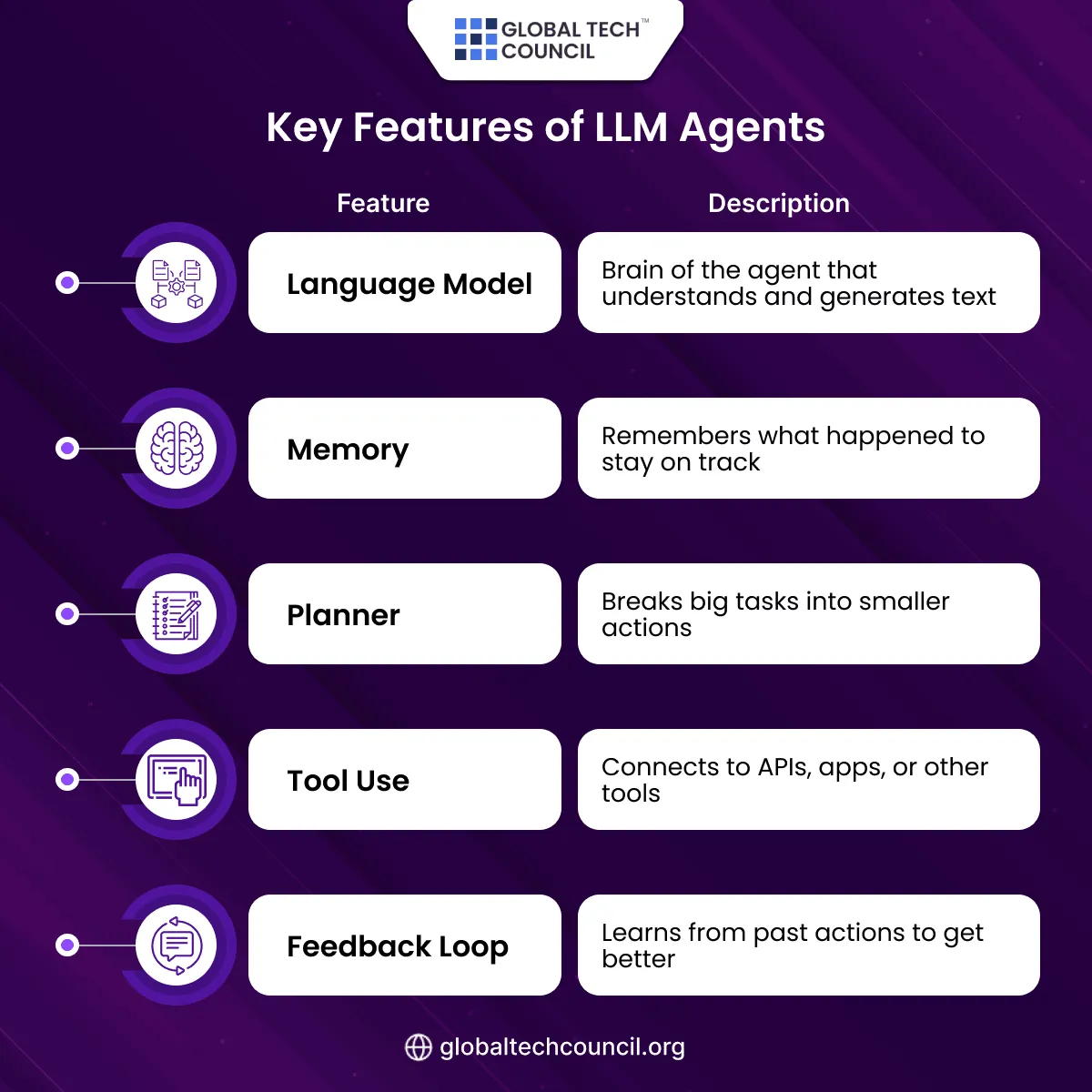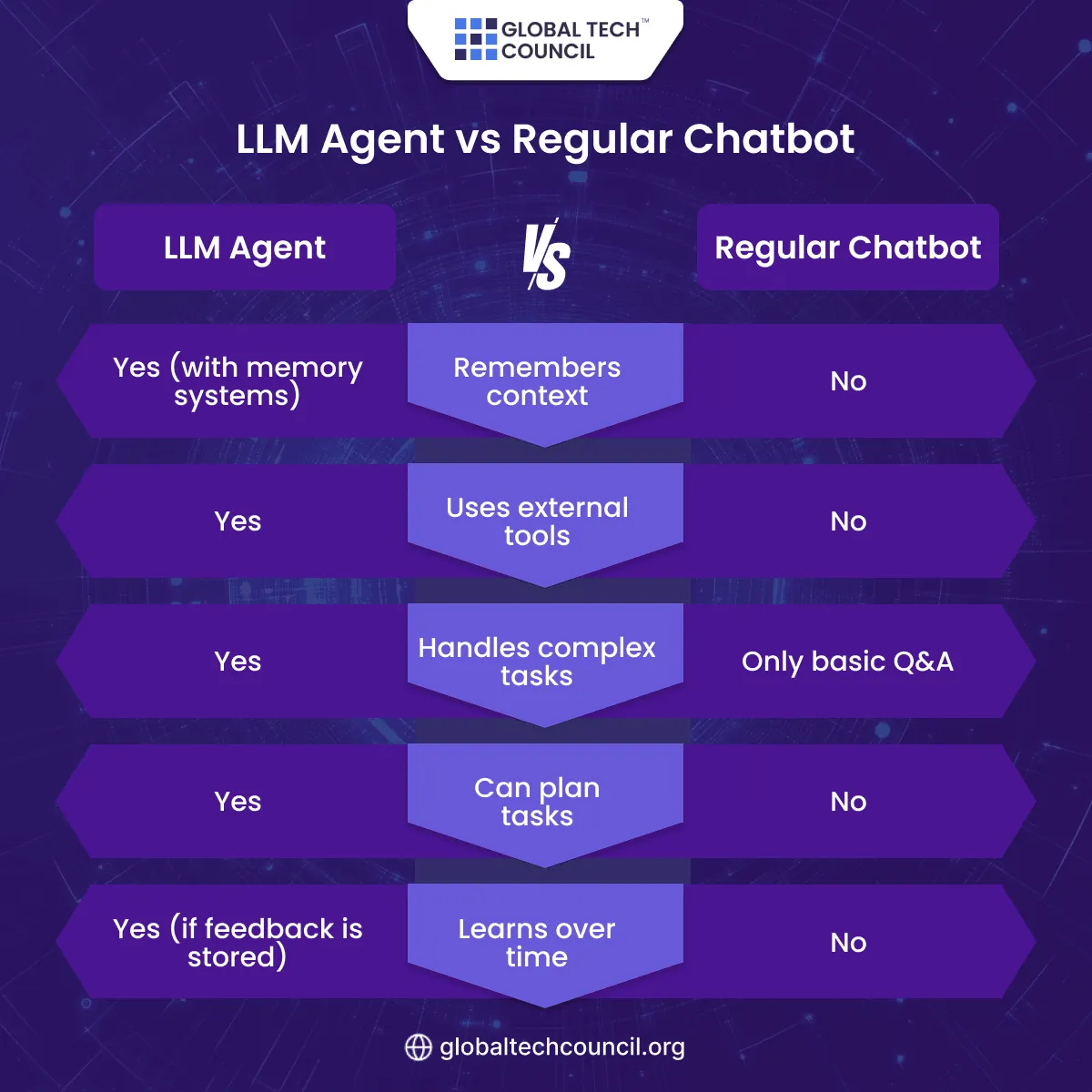
An LLM Agent is an advanced AI system that uses a large language model (LLM) like ChatGPT or Claude to complete tasks on its own. It doesn’t just answer questions—it plans, decides, and takes action. LLM agents can connect to tools, learn from past steps, and solve complex tasks step by step. These agents are being used in customer support, research, content creation, coding, and business automation.
They’re not just smarter chatbots—they’re AI workers that think and act.
How Does an LLM Agent Work?
An LLM agent works in four simple steps:
- Understand – It reads your goal and figures out what needs to be done.
- Plan – It breaks the task into smaller steps.
- Act – It does those steps using tools like APIs, browsers, or documents.
- Improve – It learns from what worked and what didn’t.
LLM agents use memory and reasoning, so they can stay on track even in long or tricky tasks.
Key Features of LLM Agents
Where Can You Use LLM Agents?
LLM agents are already helping in many areas:
- Customer support – They can answer queries, solve issues, and even talk to databases.
- Content creation – From blog writing to video scripts, agents can plan and write full content.
- Software development – AI agents can code, debug, and review code.
- Marketing – Agents can research trends, schedule posts, and create ad copy.
- Personal assistants – They help schedule meetings, write emails, or track habits.
These use cases are growing fast as tools like LangChain, AutoGPT, and CrewAI evolve.
Benefits of Using LLM Agents
LLM agents offer many clear advantages:
- Save time by doing repetitive work
- Reduce costs by replacing manual tasks
- Work 24/7 without breaks
- Improve over time with memory and feedback
- Handle multi-step problems that normal bots can’t
For businesses, this means better customer experience and faster operations.
Challenges and Limitations
LLM agents are powerful, but they’re not perfect:
- They can make mistakes or “hallucinate” facts
- They need access to good tools and up-to-date data
- Setting them up can take time and tech knowledge
- Security and privacy need careful handling
Still, the results are promising and the tools are improving fast.
Types of LLM Agents
Some popular LLM agents today include:
- AutoGPT – Builds and runs itself toward a goal
- BabyAGI – Uses memory to plan and learn over time
- CrewAI – Runs teams of agents that work together
- OpenAgents – Experimental tools from OpenAI for end-to-end tasks
These agents are part of a growing trend toward “agentic” AI systems.
LLM Agent vs Regular Chatbot
LLM agents are changing how we think about AI. They’re no longer just assistants—they’re becoming autonomous workers.
If you want to understand how these systems work or build your own, consider enrolling in a Data Science Certification. To learn how AI is changing marketing and automation, check out the Marketing and Business Certification. To upskill in cutting-edge AI systems and deep tech applications, visit the Deep Tech Certification Hub.

